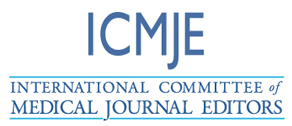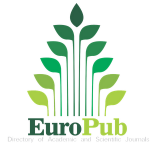Causes of DNA Damage and Genomic Instability: A Review
DOI:
https://doi.org/10.55677/IJCSMR/V3I8-01/2023Keywords:
DNA damage, tDNA, Chromosomes, Telomere, Genomic stability, DNA repairAbstract
Genomic instability defines all genetic alterations resulting from excessive or high frequency of mutation; base pairs sequence alterations known as microsatellite instability (MSI) and aneuploidy also called chromosome instability (CIN), chromosomal re- arrangements within the genome or the susceptibility of genome to alterations that occur during cell division cycle. The genome of most cancer cells is highly unstable, mostly due to damage to tumour suppressor genes example tp53 which encodes p53 or other genes coordinating cell division. Telomere is a nucleoprotein complex which extends the physical ends of eukaryotic chromosomes, protecting it from degradation, counteracting sequence loss, protecting genes closer to the chromosomes end and inhibiting cell cycle arrest. Studies have implicated the dysfunction of telomere to the formation of sub-tetraploid aneuploid cells that exhibit tumourigenic capacity and formation of anueploid cells that can elude programmed cell death (apoptosis) and form tumour cells, thus initiating genomic instability. In this review, we presented an insight to the causes of DNA damage and its associated genomic instability. We found that many factors such as fragile sites, end replication problem, DNA double strand breaks, DNA replication defects, deletion, insertion and translocation all are responsible to the fragile nature of the genome.
References
Ambjørn, S.M., Duxin, J.P., Hertz, E.P.T., ...Lisby, M., Nilsson, J. (2021). A complex of BRCA2 and PP2A-B56 is required for DNA repair by homologous recombination. Nature Communications, 12(1), 5748.
Ayra-Plasencia, J., Ramos-Pérez, C., Santana-Sosa, S., ...Lisby, M., Machín, F. (2021).
Topoisomerase II deficiency leads to a postreplicative structural shift in all Saccharomyces erevisiae chromosomes. Scientific Reports, 11(1), 14940.
Betlem, K., Hoksbergen, S., Mansouri, N., ...Banks, C., Peeters, M. (2018). Real-time analysis
of microbial growth by means of the Heat-Transfer Method (HTM) using Saccharomyces cerevisiae as model organism. Physics in Medicine, 6, 1–8.
Blackburn, E. H (2000) Telomere States And Cell Fates. Nature 408, 53–56.
Blasco, M. A (2011) The Telomerase Activator TA-65 Elongates Short Telomeres and Increases Health Span of Adult/Old Mice Without Increasing Cancer Incidence Cell 10, (4), 604–21
Bowen N. Kolodner R. (2017) Reconstitution of Saccharomyces cerevisiae DNA polymerase epsilon-dependent mismatch repair with purified proteins. Proc. Natl. Acad. Sci. 114 (28265089):
-3612, 10.1073/pnas.1701753114.
Charifi, F., Churikov, D., Eckert-Boulet, N., ...Simon, M.-N., Géli, V. (2021) Rad52 SUMOylation functions as a molecular switch that determines a balance between the Rad51- and Rad59-dependent survivors. iScience, 24(3), 102231.
Charrier-Savournin, F. B.; Château, M.; Gire, V.; Sedivy, J.; Piette, J.; Dulić, V. (2001). "p21-Mediated "Nuclear Retention of Cyclin B1-Cdk1 in Response to Genotoxic Stress" Molecular Biology of the Cell 15 (9), 3965–76.
Chow, T. T., Shi, X., Wei, J.-H., ...Huang, B., Blackburn, E.H. (2018) Local Enrichment of HP1alpha at Telomeres alters their Structure and Regulation of Telomere Protection. Nature Communications, 9(1), 3583.
De Lange, T. (2010) How Shelterin Solves The telomere End-protection Problem. Cold Spring Harb Symp Quant Biol. 75, 167-77.
Demin, A. A., Hirota, K., Tsuda, M., ...Takeda, S., Caldecott, K. W. (2021) XRCC1 prevent toxic PARP1 trapping during DNA base excision repair Molecular Cell, 81(14), 3018–3030.e5
Dewhurst, S.M., Yao, X., Rosiene, J., ...de Lange, T., Imieliński, M. (2021) Structural variant evolution after telomere crisis, Nature Communications, 12(1), 2093.
Edera, A. A., Small, I., Milone, D. H., Sanchez-Puerta, M.V. (2021) Deepred-Mt: Deep representation learning for predicting C-to-U RNA editing in plant mitochondria. Computers in Biology and Medicine. 136, 104682.
Ergünm, M and Sahin B (2010) Telomere Dysfunction Induces Metabolic and Mitochondrial
Compromise. Nature 470, 359–65.
Errichiello, E., Zagnoli-Vieira, G., Rizzi, R., ...Caldecott, K. W., Zuffardi, O. (2020) Characterization of a novel loss-of-function variant in TDP2 in two adult patients with spinocerebellar ataxia autosomal recessive 23 (SCAR23), Journal of Human Genetics, 65(12), 1135–1141.
Gandini, C. L., Garcia, L. E., Abbona, C. C., Sanchez-Puerta, M.V. (2019) The complete organelle genomes of Physochlaina orientalis: Insights into short sequence repeats across seed plant mitochondrial genomes, Molecular Phylogenetics and Evolution, 137, 274–284.
Gandini, C.L., Ibañez, V.N., Zubko, M.K., Sanchez-Puerta, M.V. (2021) Complete plastome phylogeny and an update on cox1 intron evolution of Hyoscyameae (Solanaceae). Organisms Diversity and Evolution, 21(3), pp. 521–532.
Garcia, L. E., Zubko, M. K., Zubko, E. I., Sanchez-Puerta, M. V.(2019) Elucidating genomic patterns and recombination events in plant cybrid mitochondria Plant Molecular Biology,
(4-5), 433–450.
Garcia, L. E and Sanchez-Puerta, M V. (2021) Transcriptional landscape and splicing efficiency in arabidopsis mitochondria Cells, 10(8), 2054.
Garcia, L.E., Edera, A. A., Palmer, J. D., Sato, H., Sanchez-Puerta, M. V.(2021) Horizntal gene transfers dominate the functional mitochondrial gene space of a holoparasitic plant. New Phytologist, 229(3), 1701–1714.
Giglia-Mari, G., Zotter, A and Vermeulen, W (2011) DNA Damage Response Cold Spring Harb Lab.
Guo, N., Parry, E. M., Li, L. S., Kembou, F and Lauder N (2011) Short Telomeres Compromise
β-Cell Signaling and Survival. PLoS ONE 6(3), e17858.
Hadi, K., Yao, X., Behr, J. M., ...Elemento, O., Imielinski, M. (2020) Distinct Classes of Complex Structural Variation Uncovered across Thousands of Cancer Genome Graphs, Cell, 183(1), 197–210.e32.
Hanzlikova, H., Prokhorova, E., Krejcikova, K., ...Ahel, I., Caldecott, K. W. (2020) Pathogenic ARH3 mutations result in ADP-ribose chromatin scars during DNA strand break repair, Nature Communications, 11(1), 3391.
Holmes, A. C., Zagnoli-Vieira, G., Caldecott, K. W., Semler, B. L. (2020). Effects of TDP2/VPg unlinkase activity on picornavirus infections downstream of virus translation, Viruses, 12(2), v12020166.
Jamieson, O., Betlem, K., Mansouri, N., ...Whitehead, K. A., Peeters, M. (2021) Electropolymerised molecularly imprinted polymers for the heat-transfer based detection of microorganisms: A proof-of-concept study using yeast. Thermal Science and Engineering Progress 24, 100956.
Lie, S., Banks, P., Lawless, C., Lydall, D., Petersen, J.(2018). The contribution of non-essential
schizo saccharomyces pombe genes to fitness in response to altered nutrient supply and
targe of rapamycin activity. Open Biology 8(5), 180015.
Lindahl, T (1993) Instability And Decay Of The Primary Structure Of DNA. Nature 362, 709–715.
Lovejoy, C.A., Takai, K., Huh, M.S., Picketts, D.J., De Lange, T. (2020) ATRX affects the repair of telomeric DSBs by promoting cohesion and a DAXX-dependent activity, PLoS biology, 18(1), e3000594.
Maciejowski, J., Chatzipli, A., Dananberg, A., ...Campbell, P.J., De Lange, T. (2021) APOBEC3-dependent kataegis and TREX1-driven chromothripsis during telomere crisis Nature Genetics, 52(9), 884–890.
Markiewicz-Potoczny, M., Lobanova, A., Loeb, A.M., ...Ruiz, S., Lazzerini Denchi, E. (2021).
TRF2-mediated telomere protection is dispensable in pluripotent stem cells. Nature, 589(7840), 110–115.
Morafraile, E.C., Hänni, C., Allen, G., ...Lydall, D., Zegerman, P. (2019). Checkpoint inhibition
of origin firing prevents DNA topological stress. Genes & development, 33(21-22), 1539–1554.
Ohki, R., Tsurimoto, T and Ishikawa, F (2001) In Vitro Reconstitution of the End Replication
Problem. Mol. Cell. Biol. 21 (17), 5753-66.
Okafor, S. A., Okey-Mbata, C. C., Daniel, J. A. Arukalam, F. M., Daniel-Nwosu E. I. and
Okafor, A. L. (2021) Miscellany of Hospital Contact Surfaces Microbiome: A Case Study of Selected Hospitals in Owerri South Eastern Nigeria, Afr. .J Med. Phy., Biomed. Eng. & Sc., (8)2, 48 – 57.
Okafor, S.A., Agbasi, P.U., Azeez, O.T., Iwuji, S.C., Ezeamaku, L.U., Arukalam, F.N. and Eziefuna, E.O. (2022). The Frequency of Survivorship in Heterozygous Diploids of Cdc13-1exo1Δ Mutants of S. cerevisiae Is One Survivor Cell in 72 Cells/Generation at 36˚C. Advances in Bioscience and Biotechnology, 13, 469-478.
Olbrich, T., Vega-Sendino, M., Tillo, D., .Nussenzweig, A., Ruiz, S. (2021). CTCF is a barrier for 2C-like reprogramming. Nature Communications,12(1), 4856.
Olovnikov, A. M (1973) "A Theory Of Marginotomy. The Incomplete Copying Of Template Margin In Enzymic Synthesis Of Polynucleotides And Biological Significance Of The Phenomenon". J. Theor. Biol. 41 (1), 181–90.
Platania, V., Douglas, T.E.L., Zubko, M.K., ...Pietryga, K., Chatzinikolaidou, M. (2021)
Phloroglucinol-enhanced whey protein isolate hydrogels with antimicrobial activity for tissue engineering Materials Science and Engineering, 129, 112412.
Rodrigues, J., Lydall, D. (2018a).Paf1 and Ctr9, core components of the PAF1 complex,
maintain low levels of telomeric repeat containing RNA. Nucleic Acids Research, 46(2), 621–634.
Rodrigues, J., Banks, P., Lydall, D. (2018). Vps74 connects the golgi apparatus and telomeres in
saccharomyces cerevisiae. G3: Genes, Genomes, Genetics, 8(5), 1807–1816.
Rodrigues, J., Lydall, D. (2018b). Cis and trans interactions between genes encoding PAF1
complex and ESCRT machinery components in yeast. Current Genetics, 64(5), 1105–1116.
Roulet, M.E., Garcia, L.E., Gandini, C.L., ...Ponce, G., Sanchez-Puerta, M.V. (2020) Multichromosomal structure and foreign tracts in the Ombrophytum subterraneum
(Balanophoraceae) mitochondrial genome. Plant Molecular Biology. 103(6), 623 – 638.
Roy, U., Kwon, Y., Marie, L., ...Lisby, M., Greene, E.C. (2021) The Rad51 paralog complex Molecular Cell, 81(5), 1043–1057.e8.
Russo, L. C., Tomasin, R., Matos, I. A., ...Bruni-Cardoso, A., Hoch, N. C. (2021). The SARS-CoV-2 Nsp3 macrodomain reverses PARP9/DTX3L-dependent ADP-ribosylation induced by interferon signaling, Journal of Biological Chemistry, 297(3), 101041.
Sandell, L. L. and Zakian, V. A. (1993) Loss Of A Yeast Telomere: Arrest, Recovery, And Chromosome Loss. Cel, 75, 729.
Schmutz, I., Mensenkamp, A.R., Takai, K.K., ...Jongmans, M.C., De Lange, T. (2020) Tinf2 is a haploinsufficient tumor suppressor that limits telomere length, eLife, 9, 1–20, e61235.
Sfeir, A and de Lange, T (2012) Removal Of Shelterin Reveals The Telomere End-protection Problem. Science 4; 336(6081), 593-7.
Shi Y., Hellinga H. and Beese L. (2017) Interplay of catalysis, fidelity, threading, and processivity in the exo- and endonucleolytic reactions of human exonuclease I. Proc. Natl. Acad. Sci. 114 (28533382): 6010- 6015, 10.1073/pnas.1704845114.
Sixtus, A., Okafor, Patrick, U., Agbasi, Oladimeji, T., Azeez, Samuel, C., Iwuji, Luvia, U., Ezeamaku3, Jovita, A., Daniel, Maryjane, C., Onyeugo, Innocent, C. Ekuma , Elizabet, N., Offia-Kalu. and Henry, C., Okoroego (2022) Thermal Tolerance Phenotype in Cdc13-1exo1Δ Heterozygous Diploids of S. Cerevisiae is a Dominant Trait. Engr. & Tech. Jour. 7(12) 1774-79.
Strucko, T., Lisby, M., Mortensen, U.H. (2021) DNA Double-Strand Break-Induced Gene Amplification in Yeast. Methods in Molecular Biology, 2153, 239–252.
Takai, H., Smogorzewska, A, A. and De Lange, T. (2003) DNA Damage Loci At Dysfunctional Telomeres. Curr Biol, 13, 1549-56.
Takeda, S., Nakamura, K., Taniguchi, Y and Paul, T. T (2007) Ctp1/CtIP And The MRN
Complex Collaborate In The Initial Steps Of Homologous Recombination. Mol Cell 28,
–52.
Teixeira-Silva A., Ait Saada A., Hardy J., Iraqui I., Nocente M.C., Fréon K and Lambert S. (2017). The end-joining factor Ku acts in the end-resection of double strand break-free arrested replication forks. Nat. Commun; 8 (29215009)1982, 10.1038/s41467-017-02144-5.
Timashev, L.A., De Lange, T. (2020). Characterization of t-loop formation by TRF2, Nucleus, 11(1), 164–177.
Torrance, V., Lydall, D. (2018). Overlapping open reading frames strongly reduce human and yeast STN1 gene expression and affect telomere function. PLoS Genetics, 14(8), e1007523.
Wojcicki, J.M., Elwan, D., Lin, J., Blackburn, E., Epel, E. (2018). Chronic obesity and incident hypertension in latina women are associated with accelerated telomere length loss over a
-year period, Metabolic Syndrome and Related Disorders, 16(6), 262–266.
Wu, W., Hill, S. E., Nathan, W. J., ...Ward, M. E., Nussenzweig, A. (2021) Neuronal enhancers are hotspots for DNA single-strand break repair Nature, 593(7859), 440–444.
Yang, Z., Takai, K. K., Lovejoy, C. A., de Lange, T.(2020). Break-induced replication promotes fragile telomere formation, Genes and Development, 34(19-20), 1392–1405.
Downloads
Published
How to Cite
Issue
Section
License
Copyright (c) 2023 International Journal of Clinical Science and Medical Research

This work is licensed under a Creative Commons Attribution 4.0 International License.











